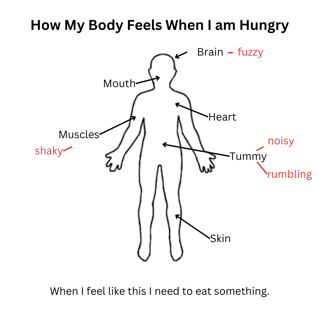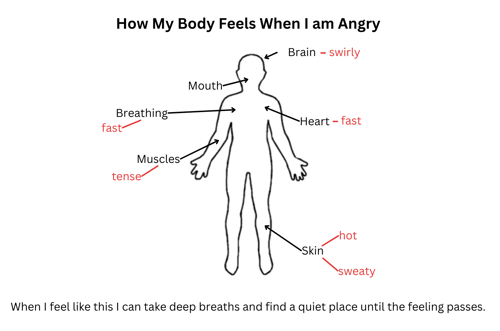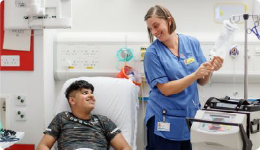Interoception

Interoception is the sensory system which gives us information about the internal sensations in the body and how they link with emotions. It helps us work out how the body is feeling. The receptors for this system are throughout the body in organs like the heart, lungs, stomach, bladder and skin. They pick up information and send it to the brain where it is translated into feelings relating to body comfort like hunger, needing the toilet, sleep, being too hot/too cold. It also helps us feel our emotions. If you process this information differently you might:
- Not know when you are full or when you are hungry/thirsty
- Not know when you need to go to the toilet
- Not know when you are too hot
- Not recognise when we are anxious
- Not know when we are embarrassed
- Not know when we are frustrated
What you can do:
There is still lots of discussion about what helps improve interoception. There is no good evidence that any particular strategy is effective. There is some evidence that mindfulness can help. It is important to rule out any possible underlying medical causes for the issues first if you are concerned.
Things which may help:
- Mindfulness techniques like body scanning
- Commenting on different feelings like noticing the difference between hot and cold hands or slow/fast heart rate at different times of the day. Listening to my Body by Gabi Garcia is a video that helps younger children to think about how their body is feeling.
- Don’t assume because they have noticed a body signal they know what it means or what to do about it. Always check. Ask them how it feels and what they think it means and what they can do about it. It is important to help your child or young person to notice the body signal first. Where do they feel it and what does it feel like? Then talk about what it might mean. You can then help them to work out what they can do about the signal. Once they have acted upon it encourage them to notice the difference in how they feel. This will help them to recognise this signal when it happens in the future, make the connection to a feeling and remember what they did to feel more comfortable. Remember this will take lots of practice and support from an adult.
For example:- notice the body signal like ‘pain’ or pressure in tummy
- connect the signal with a feeling – might need to go to the toilet
- regulate take action- like go to the toilet
- outcome – feels more comfortable
- Help them make the connection so that the next time they have that feeling they are more confident in knowing what it means.
- Draw an outline of a body and identify words that might go with that body part. Help your child work out what words they associate with sensations- remember they might not be the same ones you would use!
- How my body feels when it is hungry
- Notice: my brain feels fuzzy, my muscles feel shaky and my tummy is rumbling
- Connect: I usually notice these feelings together when I’m hungry
- Regulate I’ll eat something
- Outcome: I notice the fuzzy head, shaky muscles and rumbling tummy have gone. I was right! I must have been hungry.
- How my body feels when it is hungry

-
- How my body feels when it is angry
- Notice: my brain feels swirly, my muscles feel tense, my heart is beating fast and my breathing is fast. My skin is hot and sweaty
- Connect: I usually notice these feelings together when I’m angry
- Regulate I know this feeling will pass. I won’t feel like this forever. I will try deep breathing and finding a quiet space. This usually helps me.
- Outcome: I notice the feelings are gone.
- How my body feels when it is angry

- Use visuals to remind your child to eat, drink or go to the toilet. Add these visuals to your child's visual timetables at regular times if your child has difficulty knowing when they need to go to the toilet, when they are hungry or thirsty.
- For older children and young people setting a phone or watch alarm to vibrate as a reminder like to go to the toilet, take a drink, eat could also be useful








